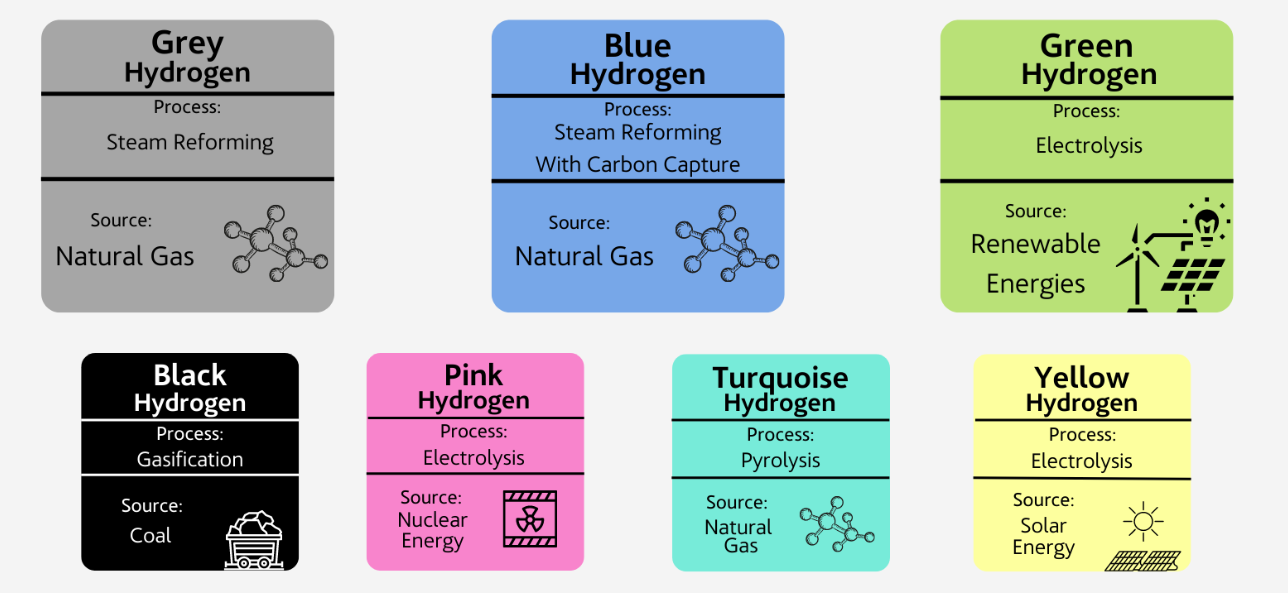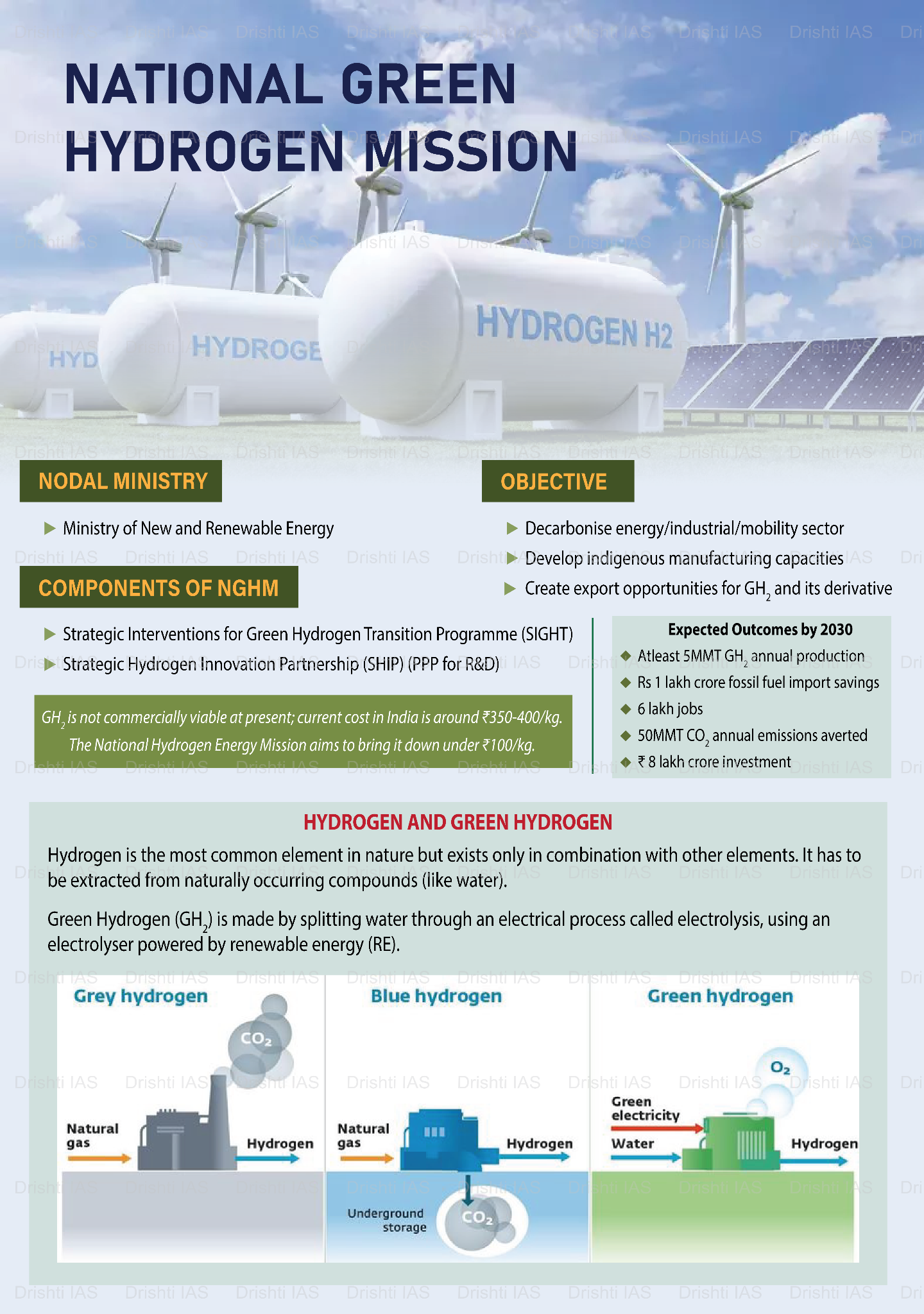Important Facts For Prelims
World Hydrogen Summit 2025
- 24 May 2025
- 4 min read
Why in News?
At the World Hydrogen Summit 2025 in Rotterdam, Netherlands, the Ministry of New & Renewable Energy outlined India’s initiatives to emerge as a global hub for green hydrogen production.
What is Green Hydrogen (GH2)?
- About: Green hydrogen is produced by splitting water into hydrogen (H₂) and oxygen (O₂) through electrolysis powered by renewable energy sources like solar power, or via biomass gasification.
- Applications: Its use include fuel cell electric vehicles (FCEVs), industrial uses such as fertilizers and refineries sector, and transportation sectors like road and rail.
- Other Types of Hydrogen:
What are India’s Initiatives to Promote Green Hydrogen?
- National Green Hydrogen Mission: National Green Hydrogen Mission is India’s flagship policy to scale up green hydrogen, with a target of establishing 5 million tonnes of annual green hydrogen production capacity by 2030.
- Phase I of the mission spans from 2022-23 to 2025-26, followed by Phase II from 2026-27 to 2029-30.
- Green Hydrogen Certification Scheme (GHCI): GHCI is an initiative to certify green hydrogen production, ensuring transparency and market credibility while promoting India’s green hydrogen market.
- It will be verified by the Bureau of Energy Efficiency (BEE) Accredited Carbon Verification (ACV) Agency to ensure compliance.
- Environmental Clearance Exemptions: Green Hydrogen and Green Ammonia plants are exempt from mandatory Environmental Clearance, reducing delays and easing project implementation.
- Green Hydrogen Hubs: Ministry of Ports, Shipping and Waterways (MoPSW) has identified three major ports—Kandla, Paradip, and Tuticorin—to be developed as Green Hydrogen hubs.
- International Collaboration: India has partnerships with Japan, Australia, and the UAE for technology transfer and investment for green hydrogen production.
Hydrogen
- Hydrogen is the lightest and most abundant element in the universe. It is a colorless, odorless, and highly flammable gas at room temperature.
- Need of Hydrogen-based Fuel: They are crucial for India’s energy independence (reduces reliance on fossil fuel imports), offering a stable, local energy source from renewables.
- Production from waste biomass also creates additional income for farmers and local communities.
UPSC Civil Services Examination, Previous Year Question (PYQ)
Prelims
Q. Which of the following is the exhaust pipe emission from Fuel Cell Electric Vehicles, powered by hydrogen? (2024)
(a) Hydrogen peroxide
(b) Hydronium
(c) Oxygen
(d) Water vapour
Ans: (d)
Q. Hydrogen fuel cell vehicles produce one of the following as “exhaust” (2010)
(a) NH3
(b) CH4
(c) H2O
(d) H2O2
Ans: (c)








